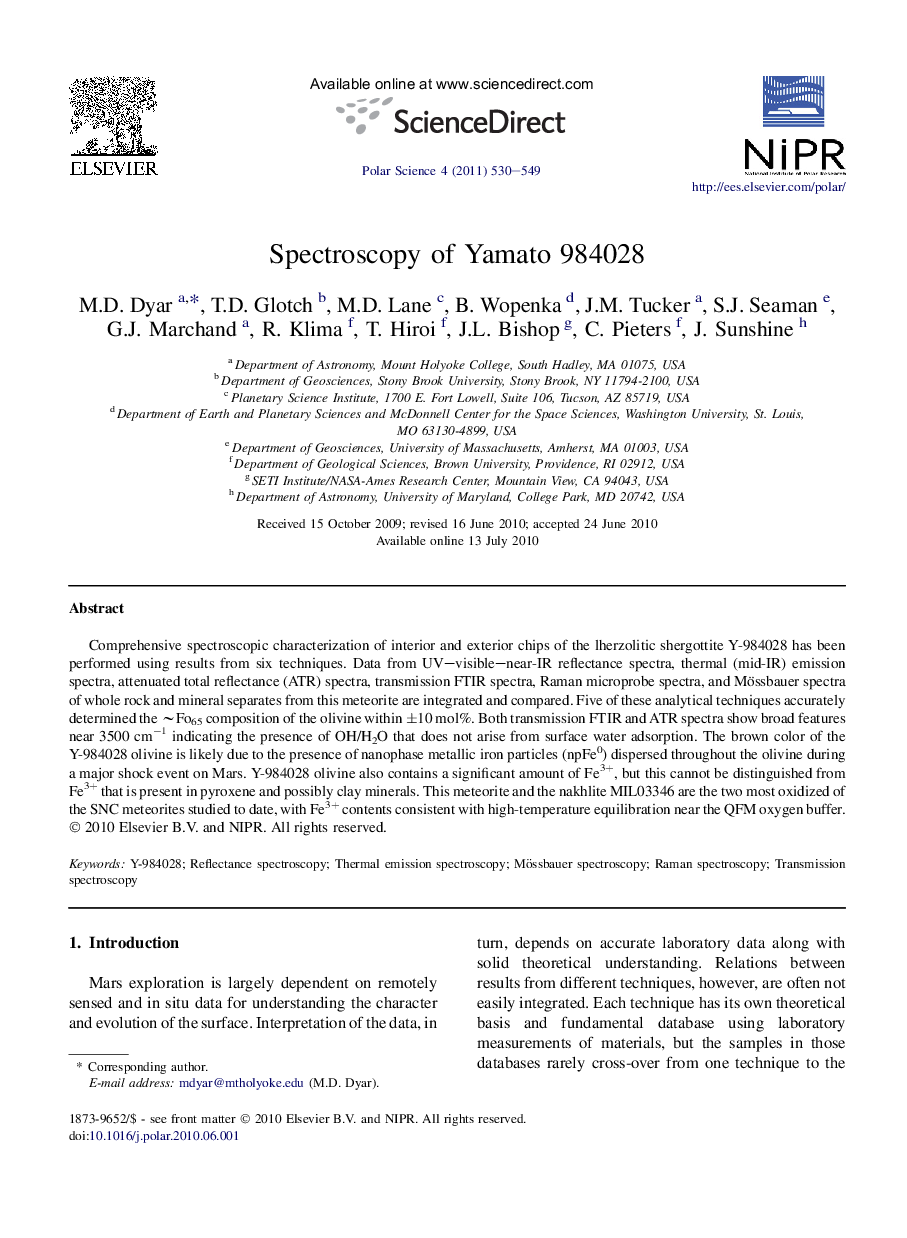| Article ID | Journal | Published Year | Pages | File Type |
|---|---|---|---|---|
| 4683265 | Polar Science | 2011 | 20 Pages |
Comprehensive spectroscopic characterization of interior and exterior chips of the lherzolitic shergottite Y-984028 has been performed using results from six techniques. Data from UV–visible–near-IR reflectance spectra, thermal (mid-IR) emission spectra, attenuated total reflectance (ATR) spectra, transmission FTIR spectra, Raman microprobe spectra, and Mössbauer spectra of whole rock and mineral separates from this meteorite are integrated and compared. Five of these analytical techniques accurately determined the ∼Fo65 composition of the olivine within ±10 mol%. Both transmission FTIR and ATR spectra show broad features near 3500 cm−1 indicating the presence of OH/H2O that does not arise from surface water adsorption. The brown color of the Y-984028 olivine is likely due to the presence of nanophase metallic iron particles (npFe0) dispersed throughout the olivine during a major shock event on Mars. Y-984028 olivine also contains a significant amount of Fe3+, but this cannot be distinguished from Fe3+ that is present in pyroxene and possibly clay minerals. This meteorite and the nakhlite MIL03346 are the two most oxidized of the SNC meteorites studied to date, with Fe3+ contents consistent with high-temperature equilibration near the QFM oxygen buffer.
